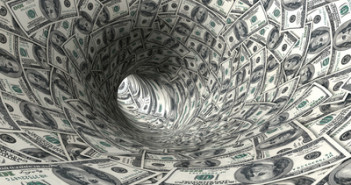QE2 in the size of $600 billion was announced in November 2010 and was completed at the end of June 2011 – in the middle of the year. Looking at the annual figures, the Fed bought 61% of all debt.
Buying more than 50% of US debt in 50% of the time smells a bit like monetizing debt. Doesn’t it? Is the “safe haven” status of treasuries a result of Fed policy or natural? Here are arguments for both sides.
The Federal Reserve acts to lower long term interest rates and stimulate the economy. One of the actions was buying US treasuries through the Quantitative Easing programs.
Of course, the US government’s debt issuing isn’t 100% symmetrical. Nevertheless, 61% in 6 months sounds very significant. It not only lowers the long term interest rates, but also casts doubt on the “safe haven” status of US treasuries.
Here’s another opinion about the “not limitless” nature of US debt from the WSJ, quoting the 61% figure.
Are they so popular because they are really safe? Or is it also the push given by the Federal Reserve? It’s hard to tell. The S&P downgrade of the US in August 2011 actually pushed US yields lower, without Fed intervention.
And now, when Spain is encountering new trouble, US yields are falling once again with some help from European money, that doesn’t have many attractive options in the old continent.
But wouldn’t these flows move towards the US without hope for a third round of quantitative easing? As 2011 figures show, the Fed isn’t shy to buy a huge amount of US debt. So perhaps a third round will have similar results, and some people want to be on board.
Bill Gross of PIMCO is certainly one of these people, “encouraging” bond buys whenever he meets a microphone. He missed the train earlier on, and now when’s on the train, he definitely wants it moving.
The big question of QE3 or no QE3 remains huge for the fate of the US dollar. More QE (or dollar printing) devalues the dollar, while a final dismissal of such a policy move will boost the dollar. Speculations about it are shaking the greenback all the time.
What will the Fed do? It depends a lot on the employment situation, which is a bit mixed at the moment. Further reading:
- Worrying signs from jobless claims – a new bad trend?
- 5 Reasons Why the Weak Non-Farm Payrolls Could Be Temporary
